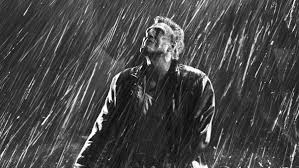An audience is a group of people experiencing an event.
(From audience)
Active - Preferred: an audience that is targeted.
Passive - Oppositional: Not the expected audience.
Preferred and Oppositional refer to How the experience is recieved as opposed to how it is sent.
Distribution: How the media is shown to an audience Streamed/Cinema Ticket/ DVD bought/TV broadcast Buy DVD
Rent DVD
Illegal Streaming
Legal Streaming
Download
Watch on TV/Freeview/Cable/Satellite
Pay to view
Cinema (Art-House, Multiplex)
Exhibition: How the media is watched from industry to audience.
Traditionalists
Streaming/Rental - Modern technology allows cheap, easy, immediate access.
Audience capability: Digital Processes
This presentation is a visual representation of Pete Buckingham's paper that I will be referencing throughout the rest of the post.
Pete Buckingham suggest that several factors effect audience patterns in the UK. There is evidence that most international audiences follow similar patterns. These patterns are as follows:
- Level of Education and job status - He states that more educated people and therefore, people with higher class jobs such as ABC1's make up a higher population of cinema goers than people in the other categories. He says "ABC1's represent 49% of the population, but 60% of the cinema audience which increases to 66% amongst heavy cinema goers." This implies that a higher level of education makes a person more likely to go to the cinema. This Is because they would have more disposable income to spare so they can afford the cinema more often than people who have lower paid jobs.
- Age - He shows statistics that suggest that younger audiences (ages 15-24) make up a high amount of cinema goers. This trend drops as ages 35-44 make up a lower amount than the previous group and 55+ represent a low amount. People of ages 15-24 make up 32% of the population but 40% of cinema goers. People of ages 35-44 make up 38% of the population and 35% of cinema goers. People of ages 55+ make up 34% of the population but only 20% of cinema goers.
According to Pete Buckingham's method of classifying audience, I am closest to the hero seeker as I don't watch many films at the cinema (around 2 or 3 a year) and I never go on impulse, it is always well planned. The problem I have with this classification is that the groups are quite stereotypical and not everyone that follows certain trends mentioned will follow others and therefore, make them hard to classify.
Buying films on DVD Is the most frequent way through which I watch Films. I usually watch these with family although I do watch some with friends or by myself, depending on the interest they have for the film. I spend about 4-5 hours watching these a week. I do this traditionally.
I use Legal Streaming to watch a small majority of the films I watch, I do this at home, on my Xbox 360 console or my laptop alone. I tend to watch about one film a month using this method. I do this Hedonistically.
TV is the third most frequent way in which I experience film. I do this both alone and with others. I will tend to watch one film a month depending on what channels are broadcasting at the time. I will never plan to watch films on TV, I will just happen to find films on different channels. I do this traditionally.
If I were to want to find out more about audience trends, I could use all sorts of means and tools:
- Online surveys (Primary research)
- Interview and vox pops (Primary research)
- Statistics from Cinema's or BFI ( Secondary research)


 All Male Cast shows a male dominance in work and high status as it is situated in what is obviously a
All Male Cast shows a male dominance in work and high status as it is situated in what is obviously a